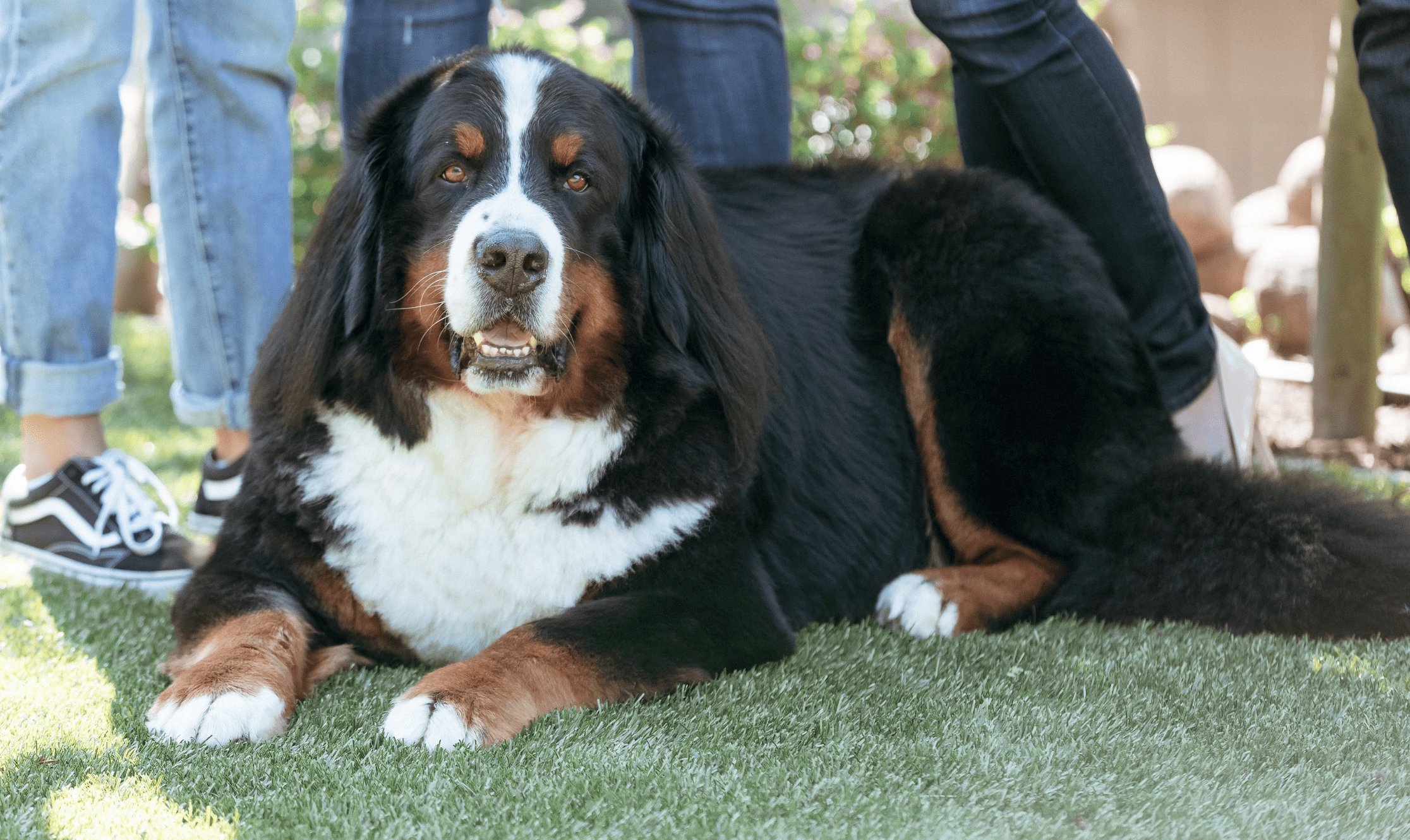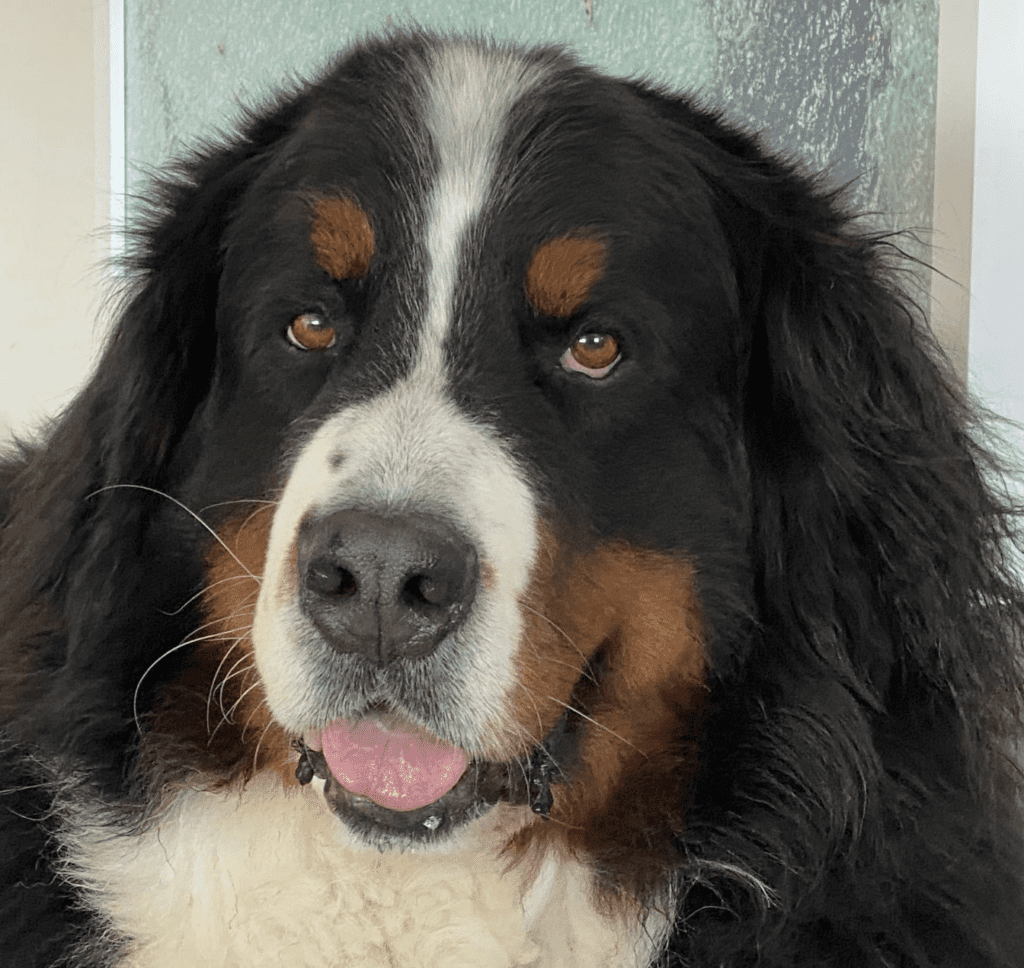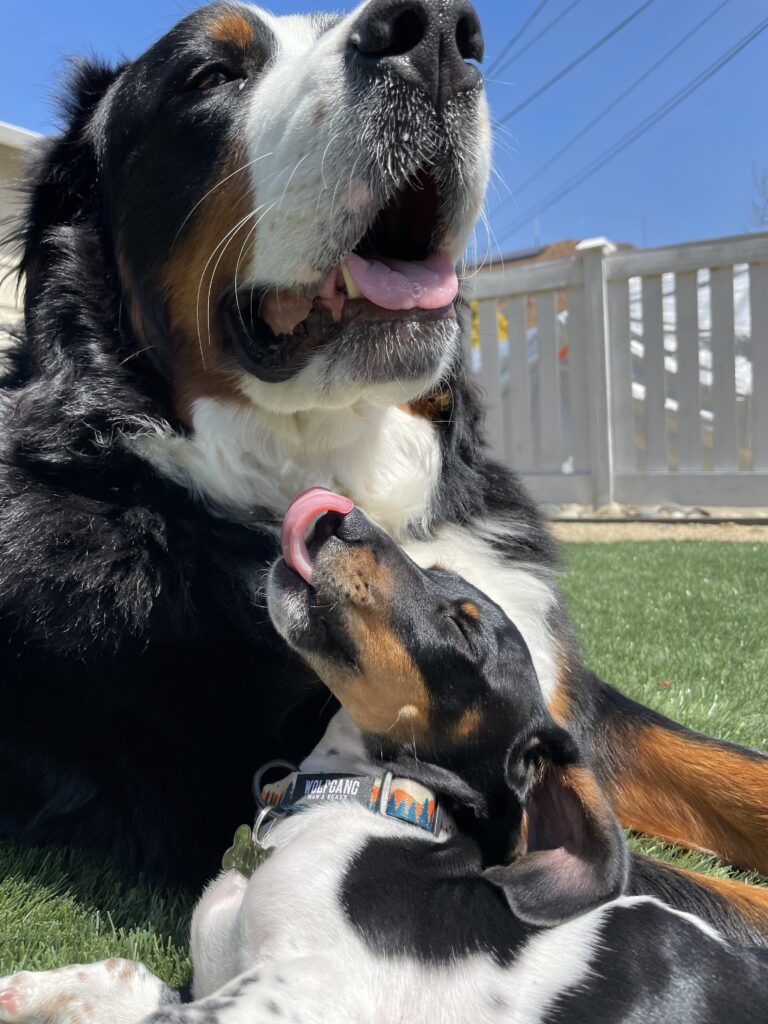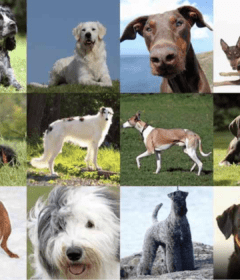Interesting Facts About Your Dog

Interesting Facts About Your Dog – They say that dogs are a mans’ best friend – from their unconditional love and loyalty to improving our mental health and giving the best cuddles.
It’s easy to see why dogs are one of the most popular animals when it comes to deciding which pet would make a great addition to your family.
Whether you already have a canine friend, are looking to get one, or simply want to brush up on your doggy knowledge, here’s a list of interesting facts about dogs.
Dogs and humans go way back.
According to research, the first domesticated dogs came about 33,000 years ago, migrating to Europe from south east Asia.
A DNA study found that dogs actually became self-domesticated, evolving from wolves who had scavenged alongside humans for generations, into the loyal companion that we know and love today. No wonder they are coined a “man’s best friend”.

Interesting Facts About Your Dog – General
They curl up in a ball when they sleep – for a reason.
While dogs love to cosy, with some even loving a good cuddle with their human, there is actually a reason why they curl up when they sleep.
Deriving from their wolf-heritage, this position is all about survival, not comfort.
Dogs curl up to keep themselves warm and protect vital organs.
Dogs Can Understand Us
The average dog is thought to be as smart as the average 2-year-old, understanding roughly the same amount of words and gestures.
According to findings from a psychologist and leading canine researcher, dogs can; understand more than 150 words, they can count and they are smart enough to intentionally deceive other dogs and people in order to get treats.
Dogs Can Sniff Out Diseases
The bond between humans and dogs is such that as well as providing loyal companionship.
Having somewhat of a sixth sense for when their human is emotional, happy or angry, and the ability to aid with accessibility assistance – some dogs even lend their talents to police or medical work.
The saying “the nose of a bloodhound” is around for good reason.
Dogs have a heightened perception of smell so much that they can help with medical diagnoses.
Dogs can be trained to sniff out a variety of diseases including several types of cancer, malaria and Parkinson’s disease.
Dogs Have a Unique Fingerprint
Although we’re used to seeing adorable images of animal paw prints, it turns out that a dog’s equivalent to a human fingerprint is actually located in their nose.
Just as no two fingerprints are the same, no two dog noses are the same.
A dog’s nose pad is so detailed that it includes ridges which make up a unique pattern that is different for every dog and which allows them to be identified.
Dogs Show Affection
Dogs are social creatures and thanks to generations of being by their humans’ sides, have picked up similar gestures and interactions to display how they are feeling.
Dogs have a number of ways that they like to show affection – from licking to jumping up when they are excited to see you to rolling over for a good old tummy rub.
One of our favorites is the classic sigh.
If your dog stretches out next to you and lets out a long sigh, they are happy.
Soft vocalizations like sighs and low groans are signs of contentment in dogs.
So if your dog snuggles up and sighs, they aren’t bored, it actually means that they feel safe and comfortable by your side.
Dogs Can Get Jealous
Although animals do not experience jealousy in the same way that we humans do, they may act in a way which suggests they are jealous by exhibiting assertive, pushy, or rude behavior.
Seeking our attention, pawing at their human until they are being petted or cuddled, jumping up when socializing with other people and animals, barking and growling, can all be seen as jealous-like behaviors.
A recent study found that dogs exhibited significantly more jealous behaviours (such as snapping, pushing or getting between their owner and an object) when their owners displayed affectionate behaviors towards what appeared to be another animal or human.

Interesting Facts About Your Dog – Behavior
A trained bloodhound’s tracking evidence is legally admissible in some U.S. courts.
The United States has 75 million pet dogs, more than any other country.
It’s hard for us to say what they dream of, but some scientists believe they have the ability to revisit the activities of their day.
Some dogs’ noses notice changes in a woman’s hormones and pick up on their pregnancy, or recognize when a diabetic owner’s blood sugar levels are fluctuating, or are able to pick up on COVID through a person’s shoes.
Although cheetahs can sprint up to 70 mph in 30 seconds, greyhounds are actually faster overall, as they can maintain an average speed of 35 mph for approximately 7 miles.
Male Dogs Lift Their Leg to Urinate
Male dogs lift their legs when they pee as a sign of dominance.
Dogs’ urine contains markers that inform other dogs of its presence, social standing, and sexual availability.
Dogs lift their legs as high as they can so they can “distribute their message” better and allow their scent to travel further.
A 2018 study published in the Journal of Zoology found that smaller dogs try to lift their legs even higher so that they seem bigger to other dogs who may be around.
Dog Walking
Dogs are more aggressive when being walked by a man.
The presence of a leash, the sex of the owner, and the sex of the dog all play a part in the aggressiveness of a dog when they’re being walked.
Dogs being walked by men are four times more likely to attack and bite another dog.
Why?
Because dogs not only react to the behavior and posture of other dogs around them but also to people.
Dogs Dream
Not only do dogs dream as they sleep, scientists think that they dream similarly to us and replay moments from their day.
You can tell that a dog is dreaming if they are twitching their legs or barking in their sleep.
Additionally, small dogs have more dreams than big dogs.
Dogs Do Not Feel Guilt
Your dog averts his eyes and adopts a submissive posture after you catch him chewing something he’s not supposed to.
That means he knows that he’s done something wrong and is sorry for it, right?
Well, probably not, scientists say.
It’s more likely that the behaviors that owners associate with a dog’s guilt are their reaction to being scolded, per the American Kennel Club (AKC).
They simply don’t think as deeply about their transgression as you do.

Interesting Facts About Your Dog – Physical
It’s not unusual for a female dog in heat to mate with more than one male, Myers says.
So, puppies in one litter can have different fathers.
One human year doesn’t actually equal seven dog years. Here’s the real way to calculate your dog’s age in human years.
Dogs usually have about 50 vertebrae as opposed to a human’s mere 33. “Our necks are the same, but their thoracic and lumbar spines are longer,” Myers says.
Dogs also have 18 muscles in their ears (humans only have six).
This means they can move them in many directions and hear different sounds with each ear.
Dogs have 100–300 million scent receptors, compared to a human’s 5–6 million.
Canines also have more teeth than humans—they have 42, which is 10 more than humans do.
Dogs yawn for different reasons than we do.
Myers notes they don’t usually do it because they’re tired or have a buildup of CO2—the most common reason is because they’re feeling anxious about something.
They also do it to empathize with you when you yawn.
Most dogs are near-sighted, Myers says.
Canines are color blind, but they don’t see in black and white.
Instead, they only have two color receptors (humans have three) and see in combinations of blue and yellow.
Just like a fingerprint, each dog’s nose has a unique pattern of creases and ridges, and no two snoots are the same.
In fact, some kennel clubs use nose prints as a form of identification.
Canines have three eyelids: the upper, the lower, and one off to the inside along the snout known as the nictitating eyelid.
This eyelid serves three purposes—to protect the cornea from harsh weather, to produce tears, and as lymphoid tissue related to immune function.
Dogs can only sweat from their footpads.
Pups can be left-pawed, right-pawed, or ambilateral, which means they use both front paws equally.
Dogs mark their territory with glands in their paws.
Most dogs are not, in fact, trying to clumsily bury their poop when they scratch the ground after they go.
They are just performing yet another territory-marking ritual.
With the glands on their paws, they spread their scent and let other dogs know they are around.
Interesting Facts About Your Dog
Interesting Facts About Your Dog – Lassie was the first animal inducted into the Animal Hall of Fame back in 1969.
Dogs and humans release the same “love hormone,” called oxytocin – which may explain the bond between the two.
Laika the dog was the first animal to orbit the Earth back in 1957.
She was a stray dog from the streets of Moscow who was assigned to be part of the Sputnik 2 spacecraft launch.
Forget their sense of smell – a dog is able to locate the source of a sound in 6/100th of a second.
When a dog does their business, they align themselves with the Earth’s magnetic field – their sense for the magnetic field also explains why they are great at finding their way around.
Despite popular belief, dogs can see in color.
While we all know that dogs can see black and white, they can also see in blue, green, yellow and grey too.
Interesting Facts About Your Dog – Approximately 21% of all dogs snore in their sleep.
Different Dog Personalities >>
Things That Actually Scare Your Pets >>



